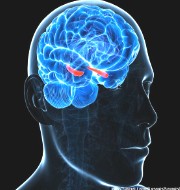Brain’s Role in Chronic Pain
Researchers have made a significant breakthrough in understanding chronic pain by identifying the specific area of the brain associated with this condition. Chronic pain is a debilitating condition that affects millions of people worldwide, and finding effective treatments has been a challenge. This groundbreaking study sheds light on the neural mechanisms underlying chronic pain and opens doors for potential new therapies.
Recording Pain-Related Data with Advanced Techniques
To investigate the brain’s role in chronic pain, researchers employed a unique approach. They implanted electrodes directly into the brains of individuals suffering from chronic pain disorders caused by stroke or amputation. By recording neural activity over an extended period, the researchers collected pain-related data from inside the brain itself. This innovative method allowed them to gain unprecedented insights into the complex processes involved in chronic pain.
Predicting Pain Severity with Machine Learning
The research team employed machine learning techniques to analyze the collected neural data and predict pain severity scores. By training algorithms to recognize patterns in neural activity, they were able to develop models that accurately determined the participants’ chronic pain states. This breakthrough demonstrates the potential of machine learning in understanding and managing chronic pain.
Examining Key Brain Regions Involved in Pain Responses
The study focused on two critical brain regions associated with pain responses: the anterior cingulate cortex (ACC) and the orbitofrontal cortex (OFC). By analyzing changes in neural activity in these regions, the researchers aimed to unravel the mysteries of pain perception and its representation in the brain. Understanding the specific mechanisms in these regions could pave the way for targeted interventions to alleviate chronic pain.
Funding and Future Implications
The research was made possible through the support of two major initiatives: the National Institutes of Health’s (NIH) BRAIN and the Helping to End Addiction Long-term Initiative. These funding sources highlight the significance of addressing chronic pain as a public health concern. The researchers hope that their findings will lead to the development of effective, non-addictive treatments for chronic pain, offering hope and relief to individuals living with this condition.
A Pathway to New Therapies for Chronic Pain
The ultimate goal of this study is to pave the way for the development of innovative therapies that can alleviate chronic pain. By uncovering the patterns of brain activity associated with pain perception, researchers aim to identify targets for interventions that can modify neural responses and reduce suffering. The findings from this study provide a solid foundation for further research and bring renewed hope to individuals living with chronic pain.
Month: Current Affairs - May, 2023
Category: Science & Technology Current Affairs








